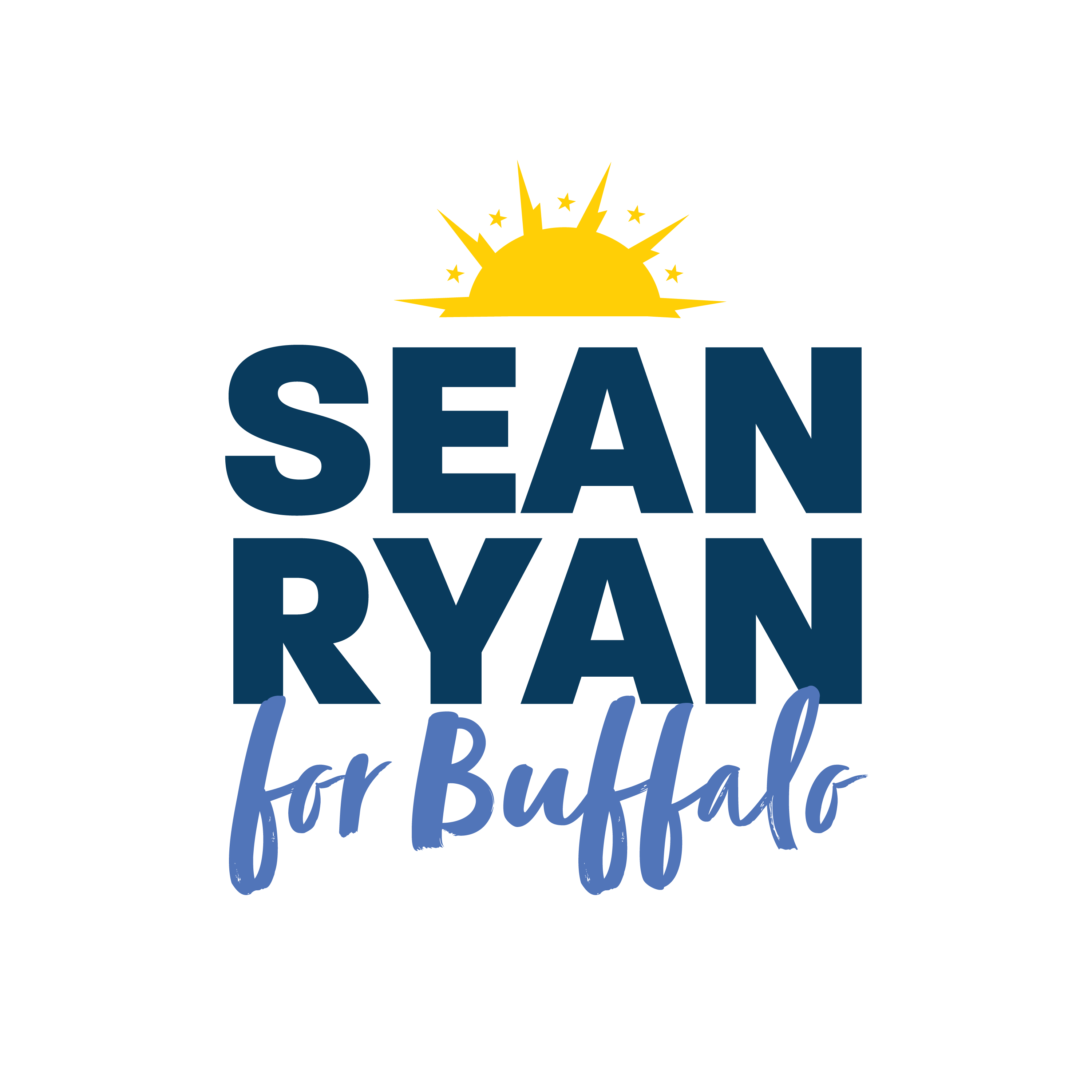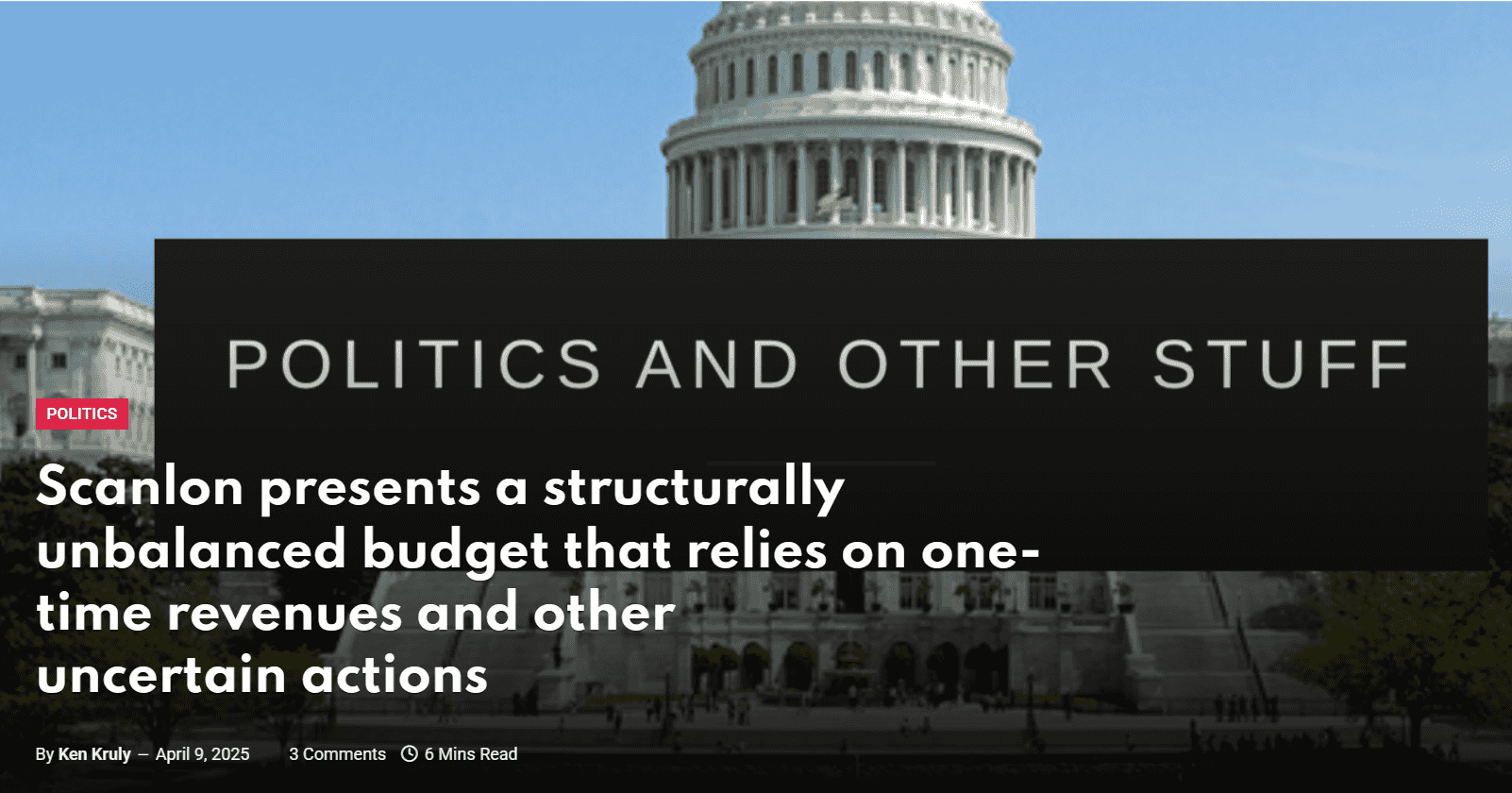Buffalo’s acting Mayor Chris Scanlon has offered the same sort of budget that his predecessor produced year after year – and that Scanlon, as a member of the Common Council agreed to. The proposed new budget seeks to fill what Scanlon describes as a $70 million structural deficit which he “inherited” from the previous administration. A large portion of that deficit will be addressed with a huge non-recurring source of funds and some other uncertain actions.
Scanlon reports that the new budget “reflects a comprehensive re-evaluation of city finances, guided by transparency, efficiency, and honesty. City departments reviewed each line of the budget to identify $10 million in cuts and $16.5 million in cost-saving measures.”
Twenty-eight million dollars in revenue is projected from the sale of land, buildings, and equipment, which is in reference to the sale of the city’s parking ramps. That step assumes that the proceeds from the sale of the ramps could also be used in future budgets. That source of revenue does not exist at the moment. Under the best of circumstances it will require many months to initiate and activate. At this time a structurally balanced budget is a fiction. An unbalanced budget is one of the triggers included in state law that can lead to a hard control board.
Assuming a cooperative Council and a toothless control board, the document will prolong the city’s impending financial crisis.
On the revenue side:
The acting Mayor proposes that the city to sell a major asset, its parking ramps, to a yet to be created new public agency, the Buffalo Parking Authority. State legislation is required to create a new bureaucracy. If that happens the new Authority will need to borrow $40-60 million (the value the city administration is attributing to the ramps) to finance the purchase, which will lead to higher parking rates. No information is available on how those numbers were produced.
This one-time revenue for 2025-2026 will put the 2026-2027 city budget in a hole by up to $28 million beginning on day one. A recent Buffalo News editorial on the subject was headlined, “Stop the insanity.”
Another part of the plan also requires state approval to become functional – a three percent tax on hotel occupancy in the city. Scanlon is projecting the receipt of $3.4 million from the new tax, which is four hundred thousand dollars more than he originally expected several weeks ago. There is no information available on how the numbers were calculated. Unlike the Erie County bed tax which devotes revenues to the promotion of tourism, the city tax would just be used as a budget filler. A similar proposal by former Mayor Byron Brown went nowhere in last year’s state legislative session.
The acting Mayor proposes an eight percent increase in the city’s property tax levy which will provide $13.7 million in additional revenues. Last year Mayor Brown proposed a nine percent increase which the Common Council reduced to 7.5 percent.
Projected revenues from cannabis sales in the city are listed at just $300,000, a substantial decrease from what was expected in the current year.
On Street Parking Meter receipts are projected at $4 million, which is nearly double what was actually collected in 2023-2024. That implies an increase in the rates, something that the Council turned down last year.
There are some other questionable revenue sources that include:
- A $1.1 million increase in projected “Payment in Lieu of Taxes” for properties that receive tax exemptions. The projected number is substantially more than in recent years.
- An increase of more than $2.7 million (51 percent) in Licenses and Permits revenues.
- $11 million in projected revenues from a new state/Seneca Nation Compact that remains to be approved. The Buffalo Fiscal Stability Authority (aka BFSA/control board) has previously suggested that that amount may be overestimated by several millions of dollars.
On the expense side:
- Budget spending totals $622 million, an increase of $5 million over the current fiscal year.
- Some vacant jobs are eliminated but there are no proposed layoffs.
- $10 million is reportedly cut from departmental spending. Nearly all city departments are cut, including the Police Department, which would be budgeted for $2.7 million less than in the current year. The Fire Department budget would increase by approximately $800,000.
- Fringe benefit spending is projected to increase by $13 million.
- Health insurance for both active and retired employees totals $101.3 million, an increase of $5.9 million over the current year. The retiree portion of those expenses is 48.6 percent of the total that will be spent.
- Overtime expenses are projected to decrease by $14 million compared to what was actually spent in 2023-2024. Overtime expenses have been regularly underestimated in previous budgets.
Add all of this up and you have a new budget that can only be technically balanced by certain actions which neither the acting Mayor nor the Council can control. They cannot even accurately determine the timing of the required actions.
The Council has some extra time available to them this year to analyze and adjust the proposed budget. The Council, however, has a long tradition of mostly just going along with whatever the mayor proposes.
There is, of course, the BFSA, which does a thorough job of analyzing the city’s revenues and expenses. That time-honored approach, however, means little since the agency does not have a working majority which can re-set the city in a fiscally sound direction.
The odds are that something very close to the fiscal document that the mayor has proposed will be approved by the Council and tsk-tsked by the BFSA. And then the city will have a spending and revenue plan held together by bubblegum and baling wire.
The city still has an impending financial crisis.
The acting Mayor’s budget could play a role in the Democratic primary for the office that is coming up in the next eleven weeks. Will voters support a candidate who offers a city budget that is not structurally balanced with operating revenues equaling operating expenses, relying on many if-comes?
The recently completed petitioning process has left Democrats with six candidates for the office of mayor, assuming that all the petitions hold up. That is rather remarkable. The number of signatures collected (approximately 29,000 according to Investigative Post) equals about 30 percent of all the registered Democrats in the city. It is likely in a volume of signatures this large that there are many signatures of voters who signed for more than one candidate, which would disqualify some signatures. Nonetheless the large numbers seem to indicate that the electorate is engaged in what is going on.
One other question remains: what solutions will the non-incumbent candidates, including Republican James Gardner, offer as alternatives to what Chris Scanlon has proposed?

